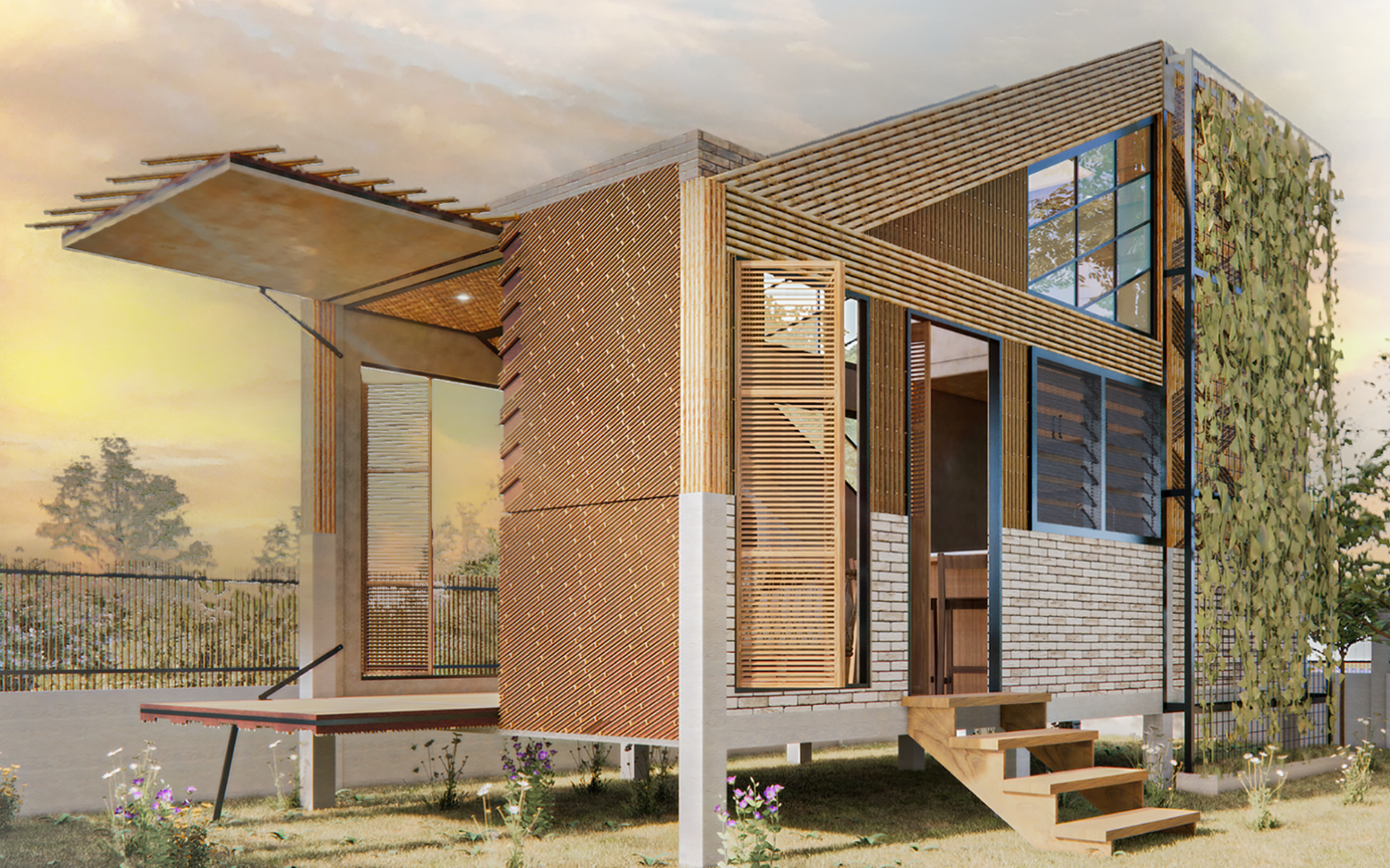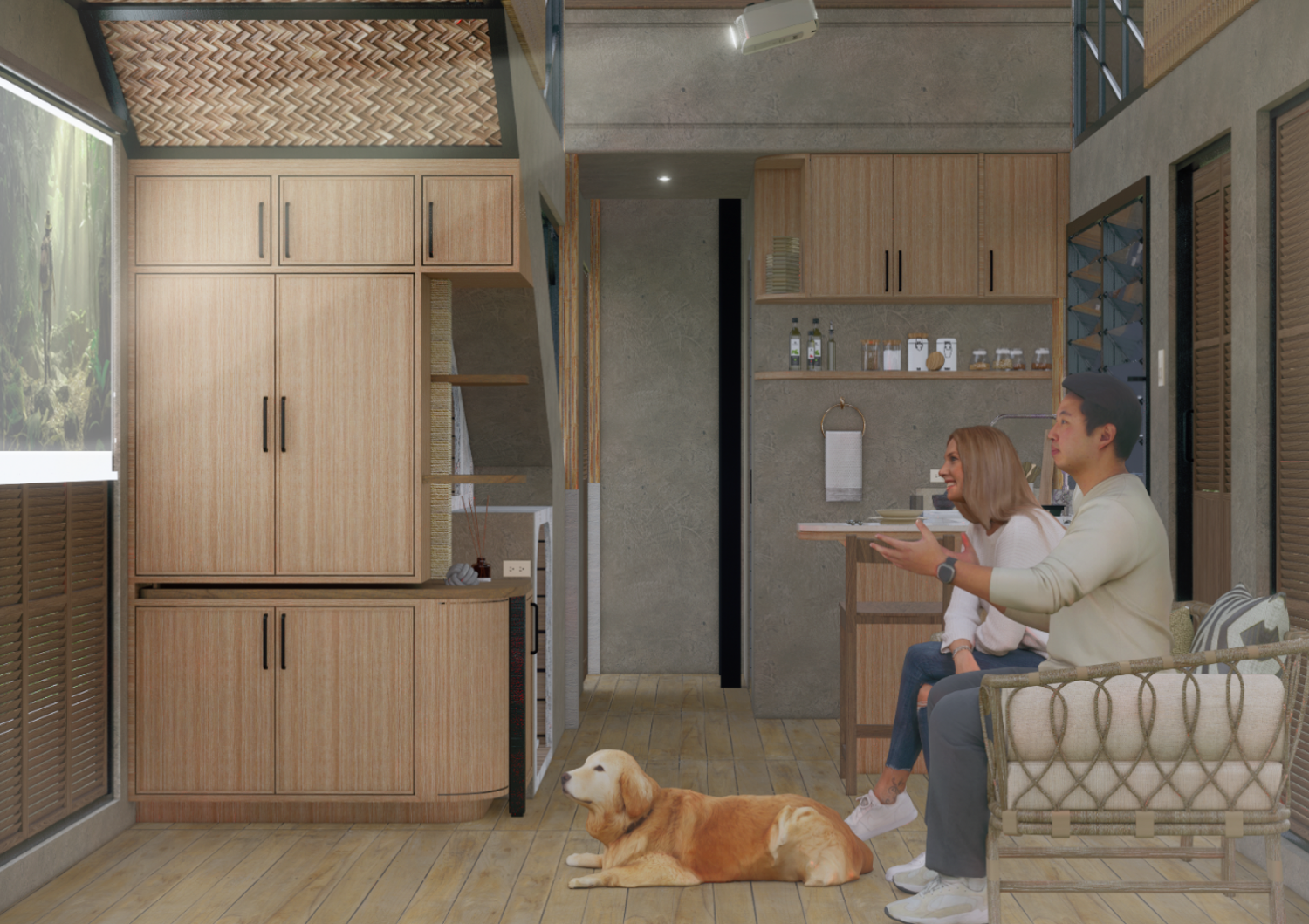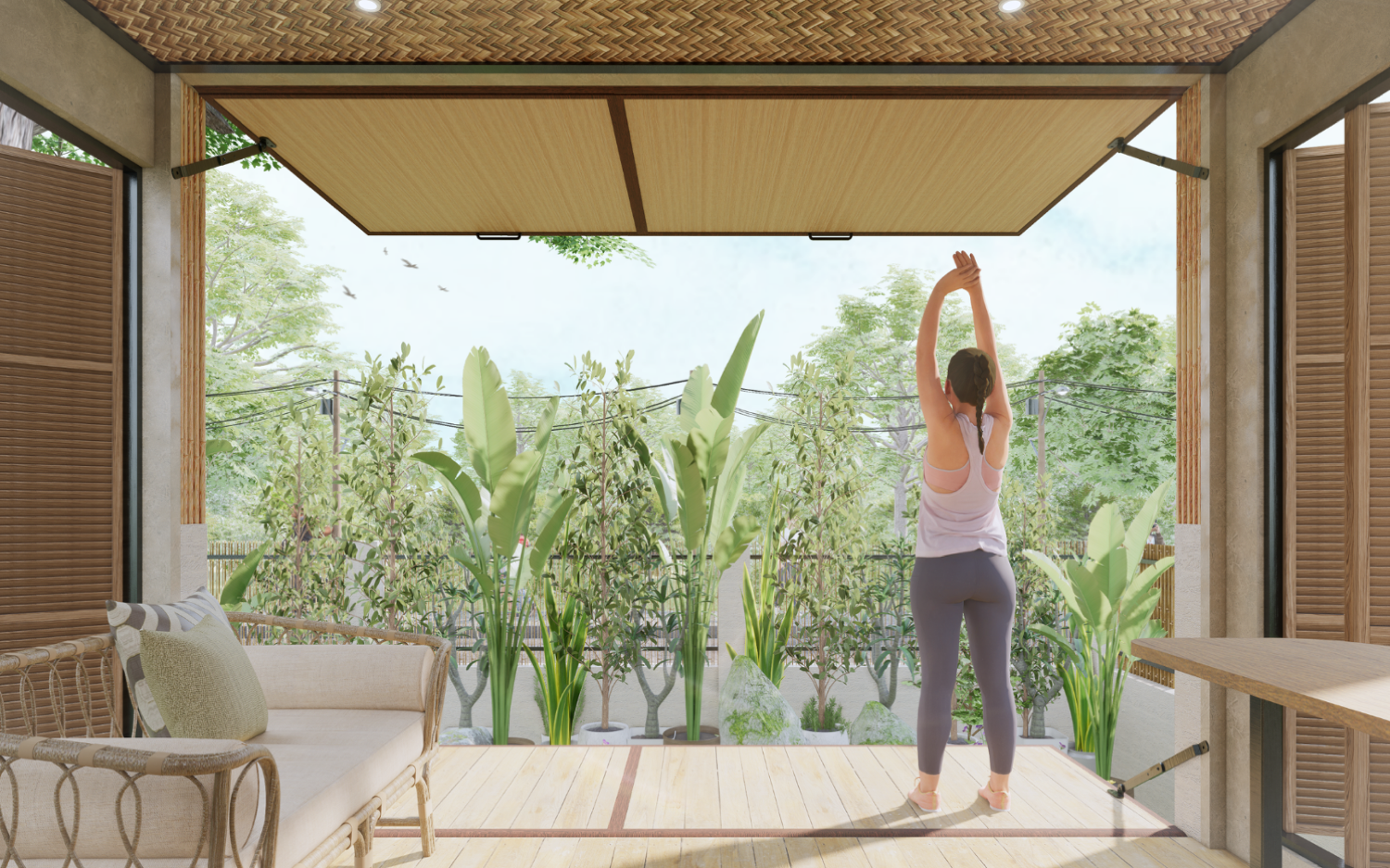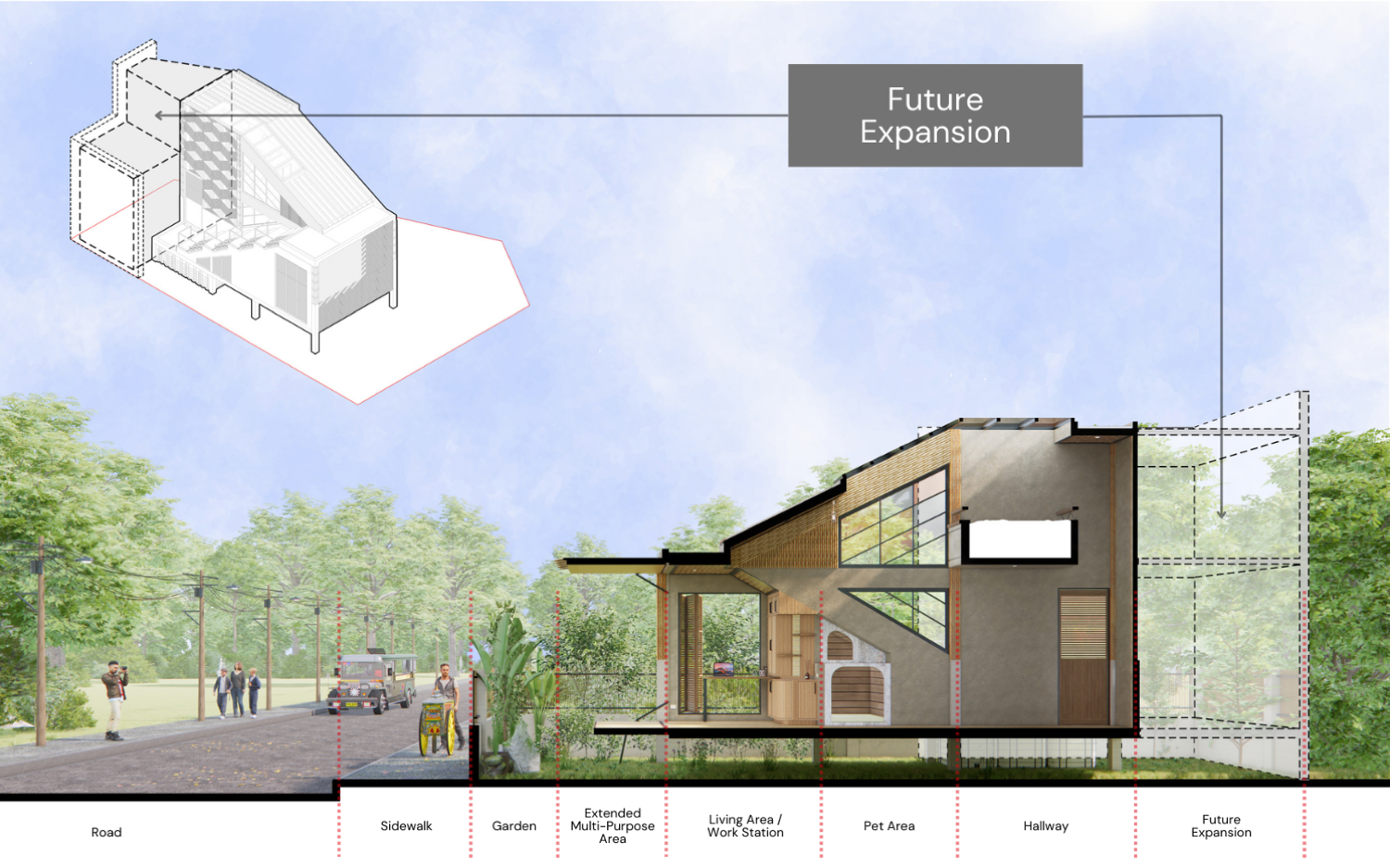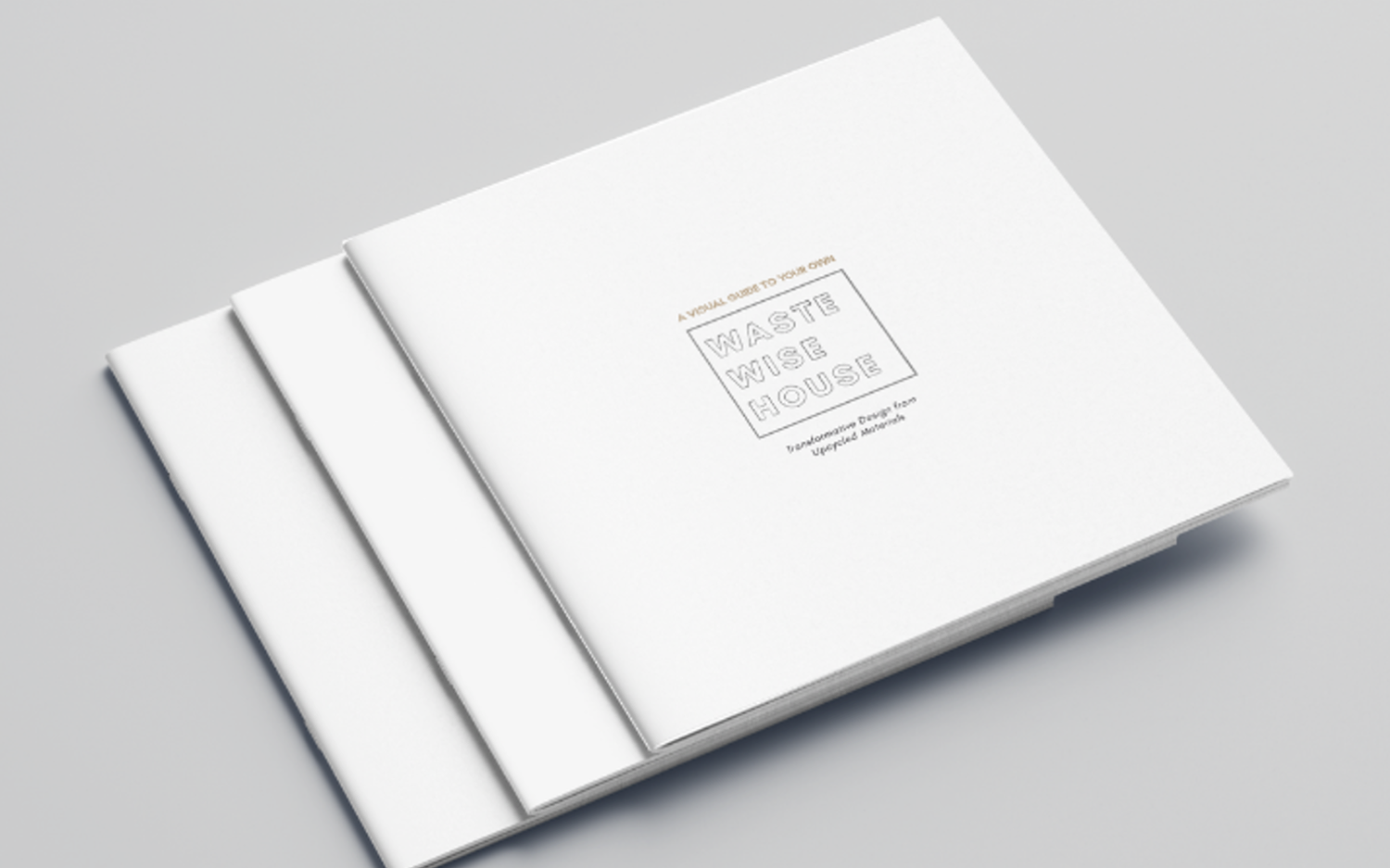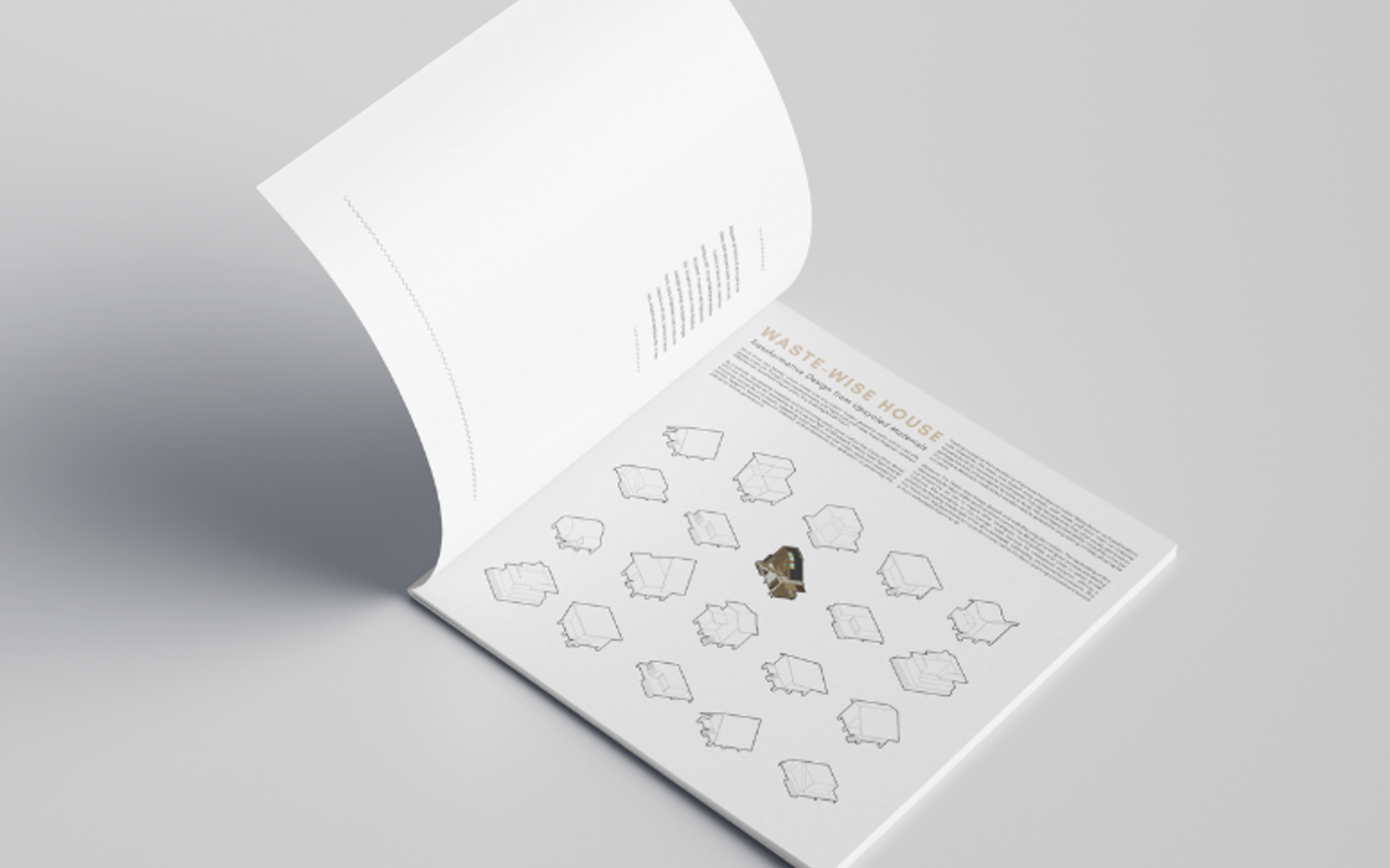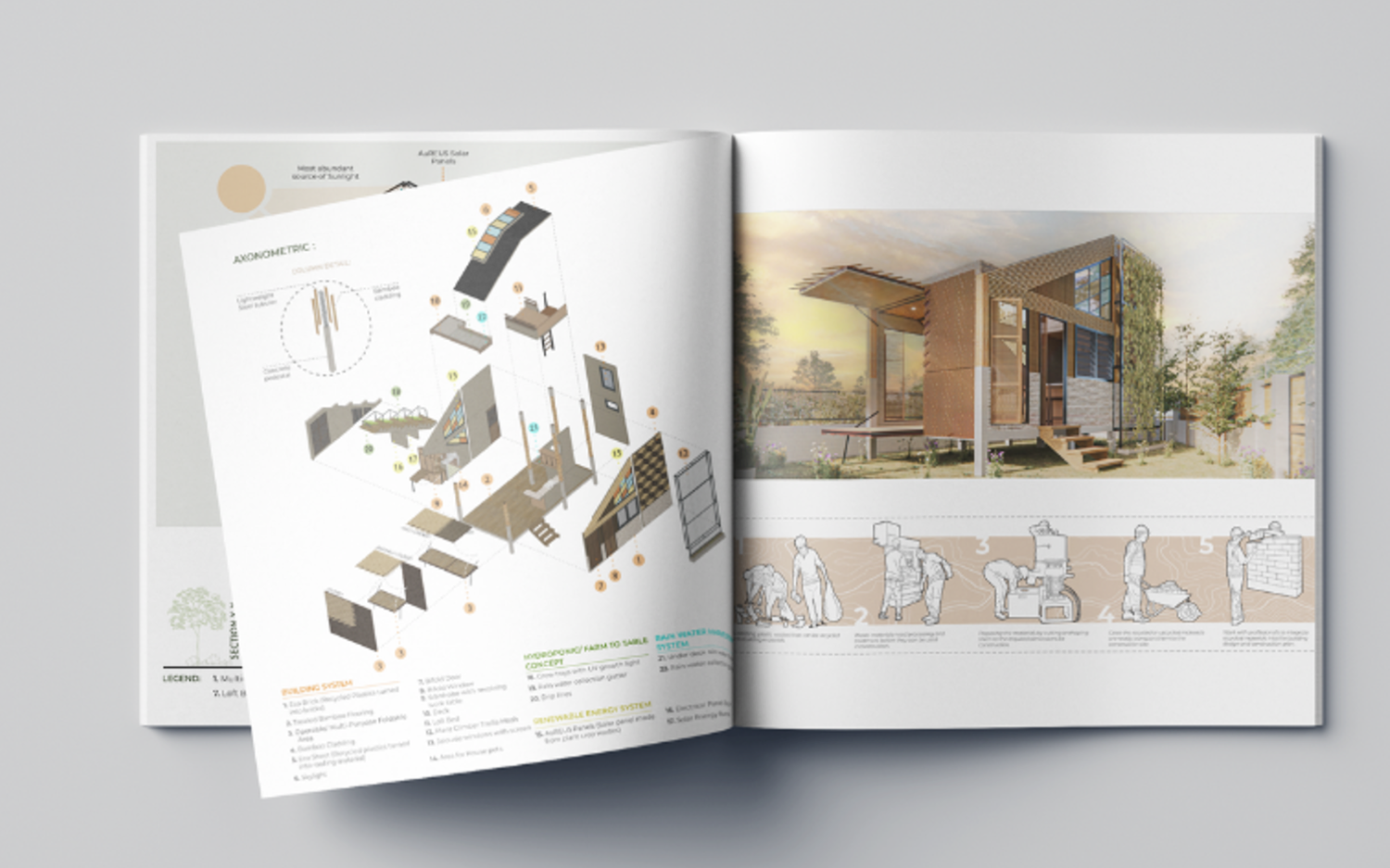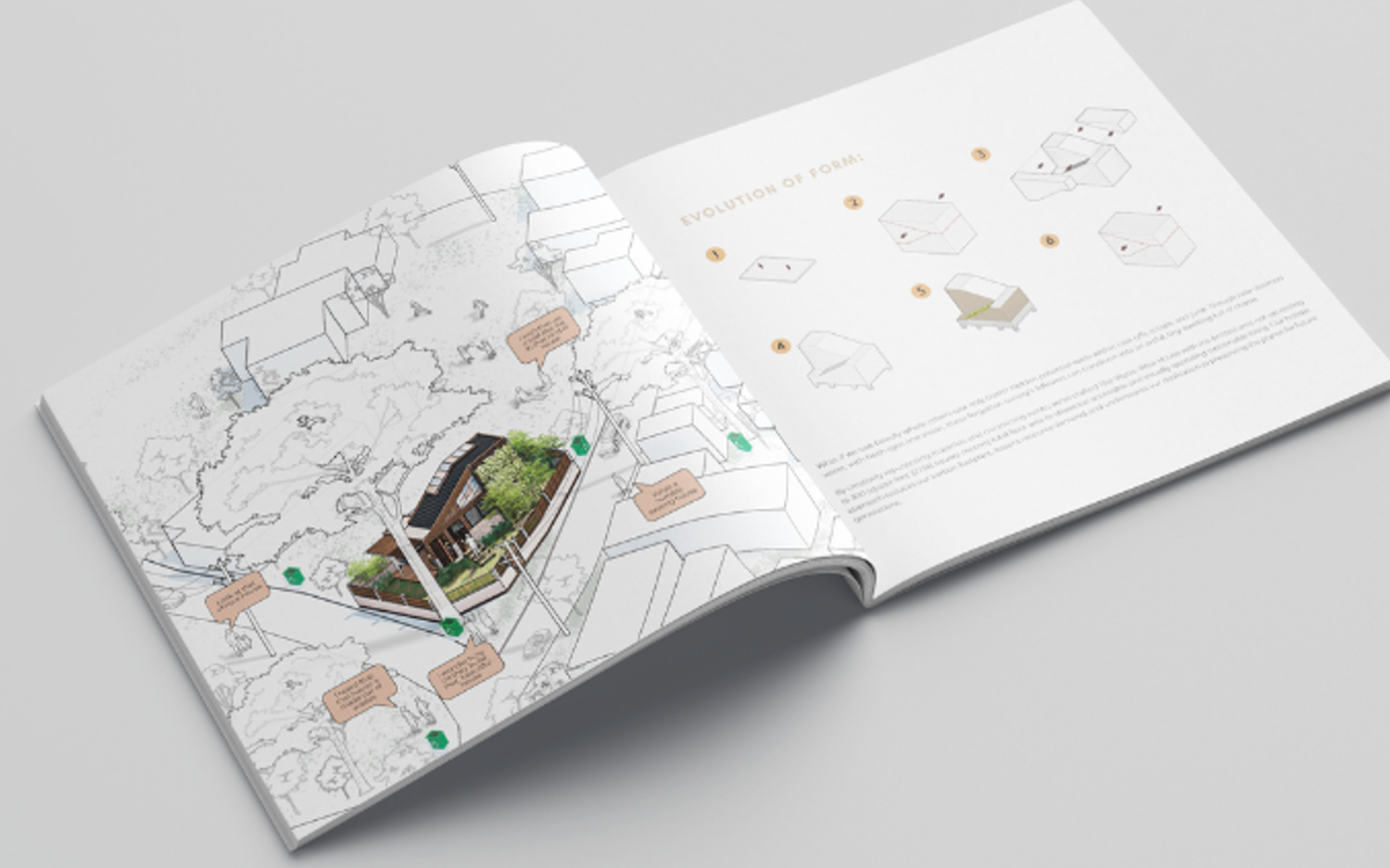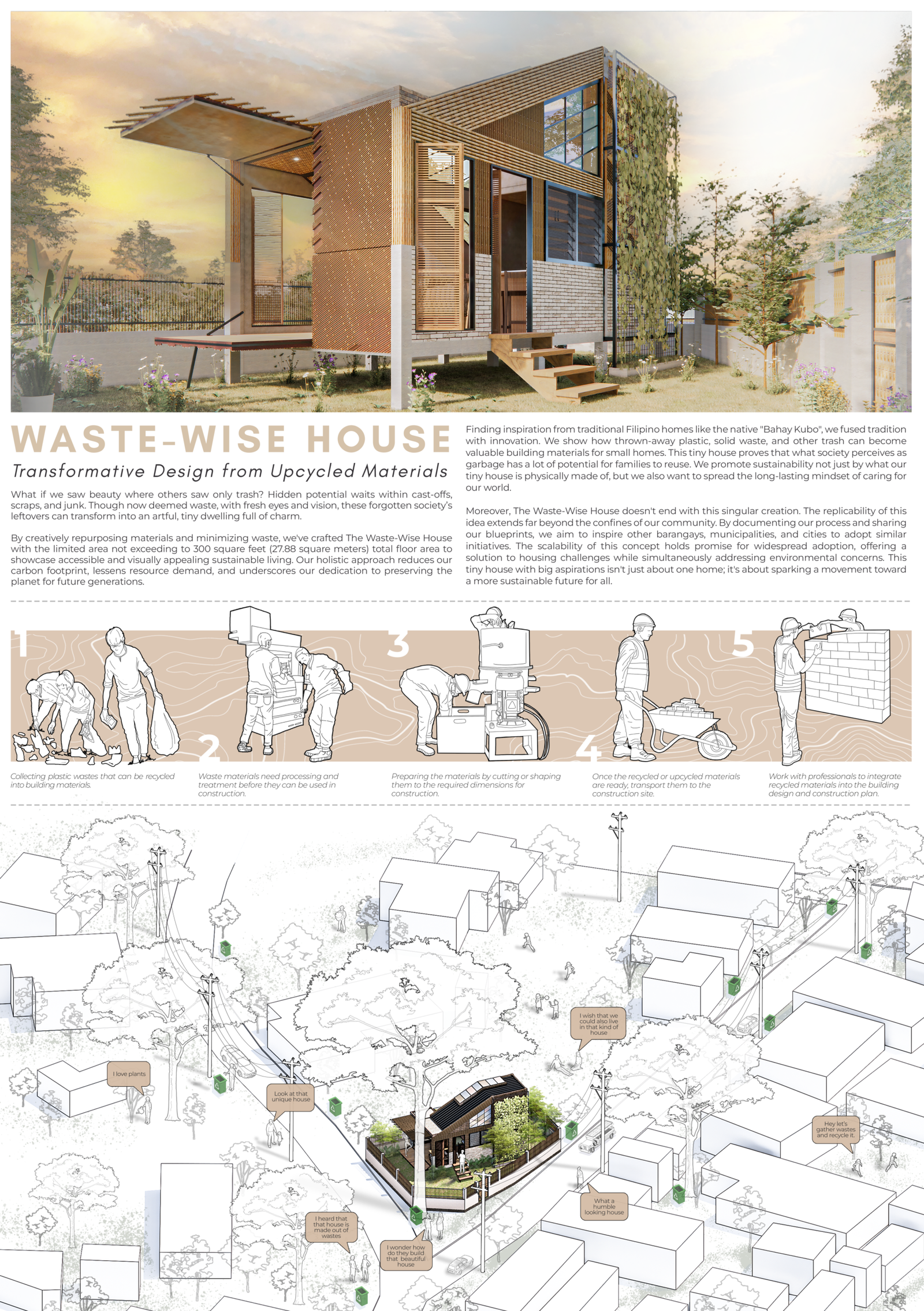Introduction and Interview Gabrielle de la Cruz
Images Bacungan Architects
“What if we saw beauty where others only saw waste?” is the question that Bacungan Architects reflected on in conceptualizing The Waste-Wise House, a 26.50 square-meter home centered on using upcycled construction materials. The project marks the firm’s first appearance at the World Architecture Festival, recognized under the WAFX Carbon and Climate category alongside Filipino entry Balai Ani by Pluszerotwo Architecture.
“The client is a caring son, fur parent, and plant enthusiast who wanted to commemorate the memory of his late parents and their eco-friendly ideals,” the architects shared. Eco-friendly bricks made from upcycled plastic bottles were used to build the structure, with other materials such as treated bamboo, recycled plastic roofing sheets, and solar panels made from plant crop wastes seen throughout the home.
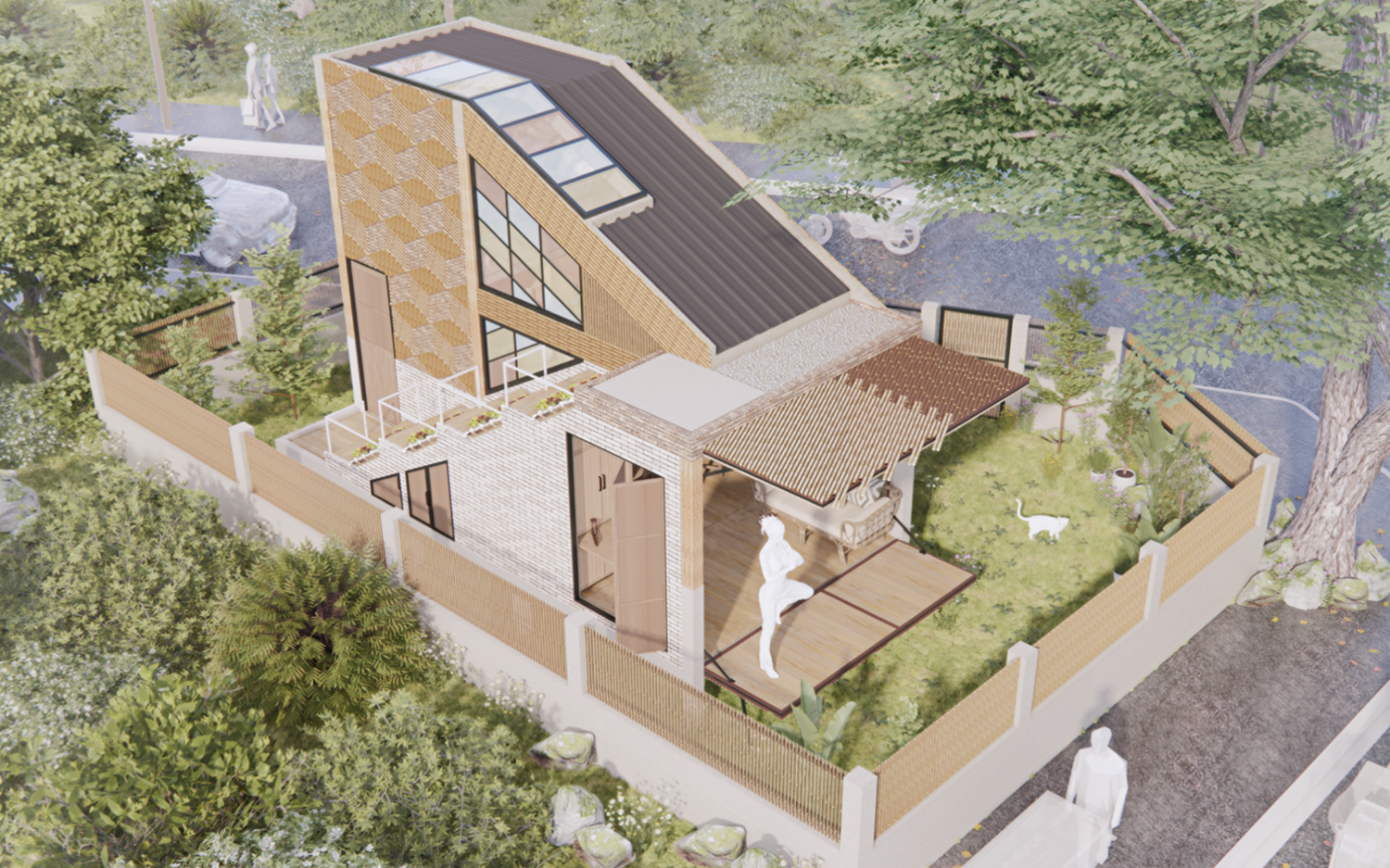

The Waste-Wise House by Bacungan Architects
Project description edited for brevity
By creatively repurposing materials and minimizing waste, we’ve crafted The Waste-Wise House with a limited area not exceeding 300 square feet (27.88 square meters) total floor area to showcase accessible and visually appealing sustainable living. Our holistic approach reduces our carbon footprint, lessens resource demand, and underscores our dedication to preserving the planet for future generations.
Finding inspiration from traditional Filipino homes like the native “Bahay Kubo”, we fused tradition with innovation. We demonstrate how thrown-away plastic, solid waste, and other trash can become valuable building materials for small homes. The house is also equipped to practice sustainability through day-to-day activities, with a rainwater system, solar energy batteries, and operable doors and windows designed to minimize water and energy consumption. Through this, we want to help instill that caring for our world requires passing on these practices through generations.
So, The Waste-Wise House doesn’t end with this singular creation. The replicability of this idea extends beyond the confines of our community. We documented our process and intent to share our blueprints, hoping to inspire other barangays, municipalities, and cities to start similar initiatives. The scalability of this concept also holds promise for widespread adoption, offering a solution to housing challenges while simultaneously addressing environmental concerns.
In its essence, this project is a tiny house with big aspirations; it’s not just about one home, it’s about sparking a movement toward a more sustainable future for all.
Interview with Bacungan Architects
Congratulations on making it to the WAF 2024 shortlist and winning under the WAFX Carbon and Climate category! Let’s start with the star of your project: upcycled materials. Can you elaborate on how the specific ones you chose for the project balance sustainability and strength?
Rocksty James Kurt Bacungan, Principal Architect: Thank you so much, Kanto!The Waste-Wise House shows how sustainability can be practical without sacrificing strength. We selected a material that not only minimizes waste but also performs as well as, or better than, conventional options.
While eco-bricks aren’t fully embraced in the Philippines yet, these bricks are impressively sturdy, with a PSI comparable to that of concrete hollow blocks. They are fire-resistant, waterproof, and insulated, designed to endure strong winds. Additionally, they provide a smooth finish that eliminates the need for plastering, proving that sustainable choices can be strong, affordable, and aesthetically pleasing.
We chose eco-bricks not only for their performance but also to inspire Filipinos. By collecting waste materials, individuals can contribute to reducing waste and discover that these materials can be transformed into livable, eco-friendly homes. This initiative showcases that sustainability can be both practical and impactful, helping to foster a greener future.
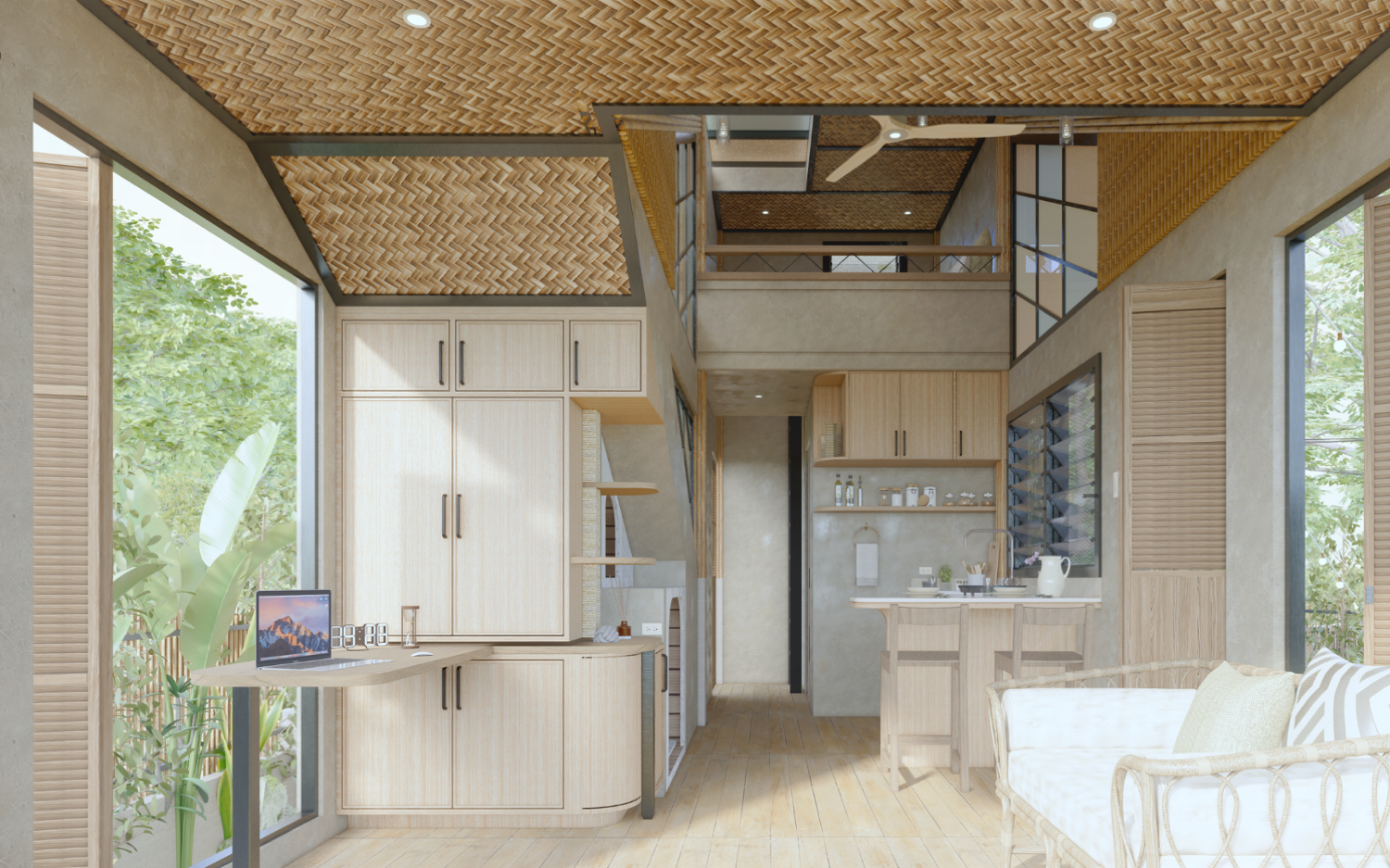

What about sourcing? Would you say that upcycled construction materials are as accessible as traditional ones in the local setting? How did you build relationships with the suppliers you specified?
Bacungan: Upcycled materials are not yet widely accessible in our local setting, which is why we initiated the “Waste-Wise House” project. Our goal is to raise awareness and collaborate with organizations, professionals, and suppliers to improve access to these materials for Filipinos.
We aim to show that upcycled materials can be effectively used in small houses and to foster partnerships with like-minded suppliers. We believe that by amplifying our message through collective voices, we can drive meaningful change.
Bon Gerome Casaclang, Junior Architect: Upcycled materials may not yet be widely accessible or available in the market. To address this, we need to raise public awareness about these innovative building materials, highlighting how they can be used and their role in reducing waste, starting at home.


Tiny homes are perceived to have limited functions due to their sizes, consume more energy per square foot compared to traditional houses, and be generally uncomfortable. How does the design of Waste-Wise House address these, and what new aspects does it aim to introduce to the typology?
Bacungan: The Waste-Wise House breaks the stereotype that tiny homes are limited, inefficient, and uncomfortable. Our clients needed a 25-sqm footprint for their 90-sqm lot, so we designed a space that connects with nature, making the exterior feel like an extension of the interior.
By maximizing natural light and ventilation, we minimized reliance on artificial lighting and cooling, leading to a reduction in energy use. This straightforward design also demonstrates that small spaces can be efficient, comfortable, and truly livable.
Jomar Beniza, Junior Architect: We used the project’s immediate surroundings as an extension of the limited space, deviating from the typical small home and encouraging and preserving the Filipino culture of social gatherings.
Casaclang: The design of our project shows the importance of engaging the right professionals to design and plan projects, whether small or large. Proper visualization and site analysis, regardless of its size, are crucial. We want to show that there are always opportunities to optimize spaces to meet the daily needs of the user more effectively.
Was there a particular material, aspect, or even part of the house that posed a challenge in your design process? How did you address this while staying true to your vision?
Bacungan: One of the biggest challenges was the client’s requirement for a 25-square-meter footprint, especially since we were also entering the Tiny House Design Competition, which called for a 300-square-foot floor area. We struggled a bit during the planning stage, but once we embraced the context and our mission, we found ways to align our vision with the project’s constraints. This understanding guided us through the design process.
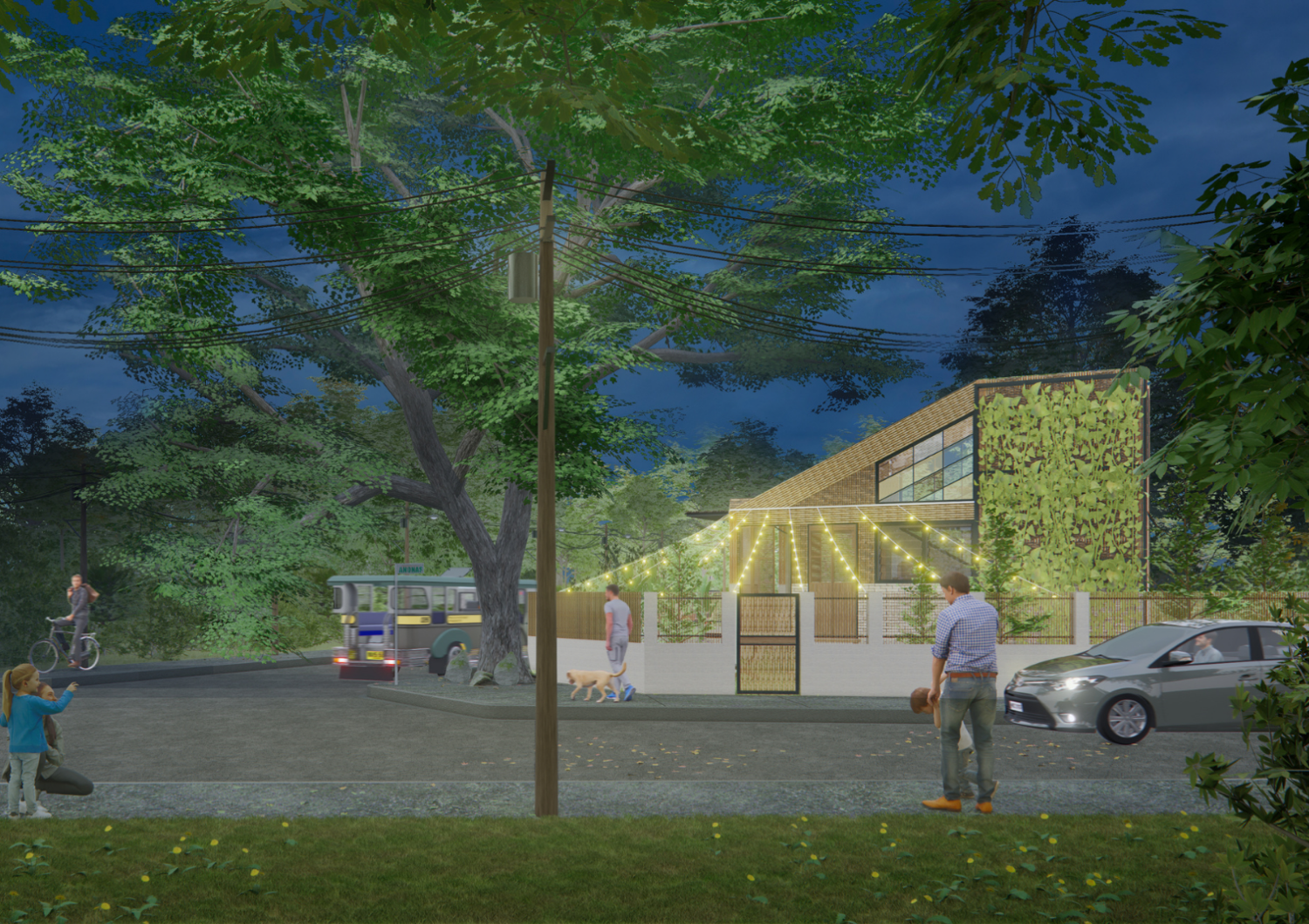
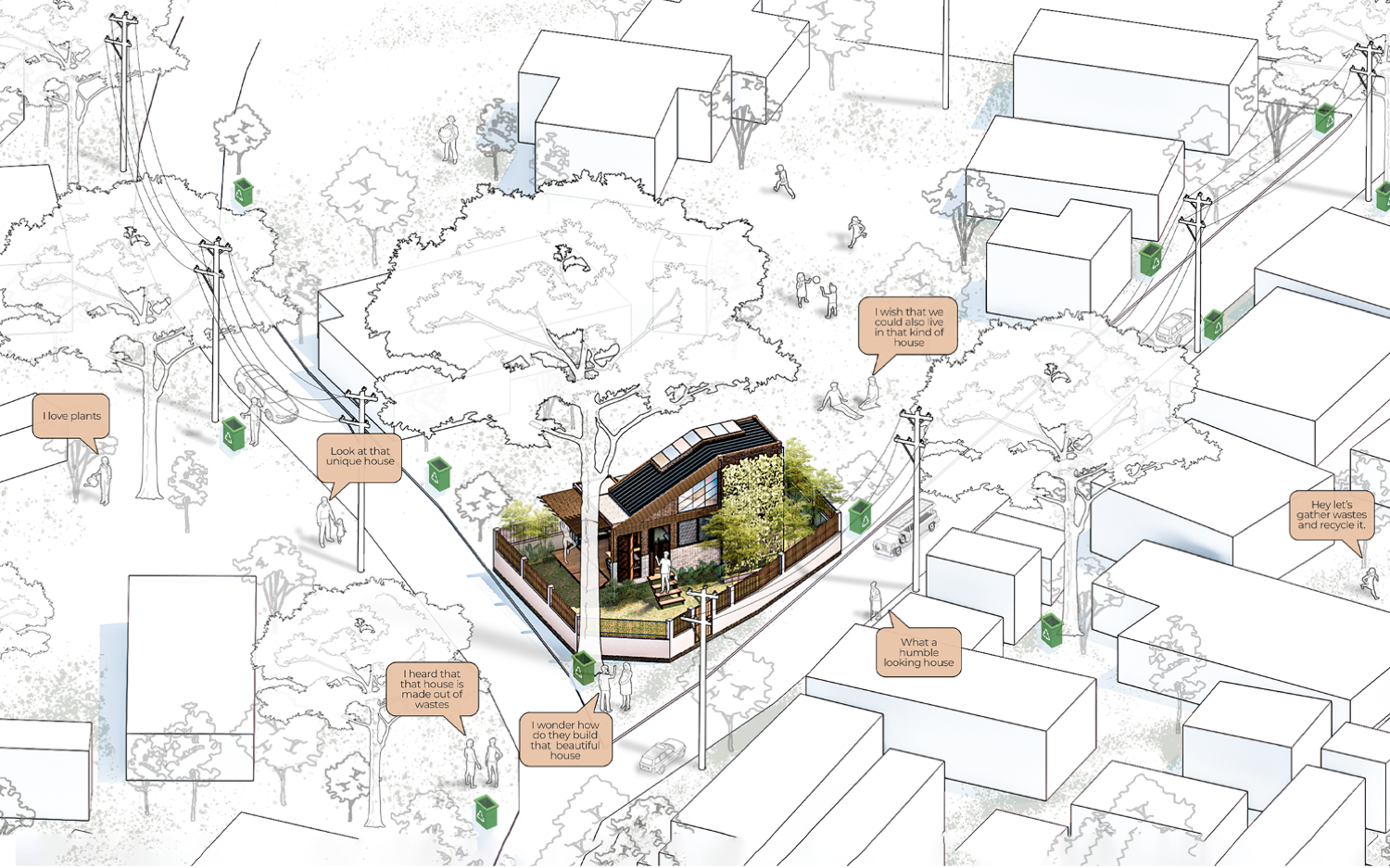
You said that you documented your process and are willing to share your blueprints to open The Waste-Wise House to reinterpretations. How do you plan to protect the integrity of your work in doing so? How much of the original design is replicable?
Bacungan: We believe that true sustainability comes from open collaboration. By sharing the blueprints of our project, we aim to inspire more people to adopt eco-friendly practices while staying true to the core principles of the design.
While the materials and methods we’ve used are highly replicable, the reinterpretation of the design will depend on the local context and resources. As long as the values of sustainability, minimal footprint, and energy efficiency are upheld, we believe the integrity of our work remains intact.
What are you most confident about your project’s narrative? Aside from it being a compact sustainable home, what do you think makes it stand out among its competitors at WAF?
Bacungan: I believe our project addresses a major issue in the Philippines—waste management, housing affordability, and sustainability. We’re grateful for the opportunity to showcase what young architects can contribute.
Our aim isn’t to outshine competitors; it’s to amplify our voice as a young firm and make a meaningful impact in our community. We want to share ideas that resonate and help shape a better future for the Philippines.
Ken Raxel Angeles, Junior Architect: At the end of the day, our goal is to share the process and blueprint with every Filipino. We believe this initiative can help our nation heal from and be experienced by future generations.
Waste-Wise House has also been recognized in local awards such as the UAP NatCon and UAP Design Awards. Following its debut on the global stage in November, how do you see the project evolving? What do you hope for it to contribute to the sustainable construction conversation in the Philippines and beyond?
Casaclang: We believe that sharing this contextual project will help our community create comfortable and functional spaces. We want it to extend beyond small properties, hoping that it can also serve as a model for housing for informal settlers in our country.
Bacungan: Getting recognized at the UAP NatCon and UAP Design Awards has been such a rewarding experience for our team. As we gear up for the global debut of the Waste-Wise House at WAF, I see this project as a chance to affect positive change in sustainable construction.
I hope it encourages architects and builders in the Philippines and beyond to rethink how we use materials and approach design. By showcasing what’s possible with upcycled materials, we aim to kickstart meaningful conversations about eco-friendly solutions that address waste and energy consumption in our communities. •

